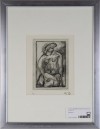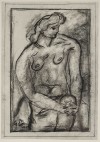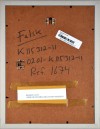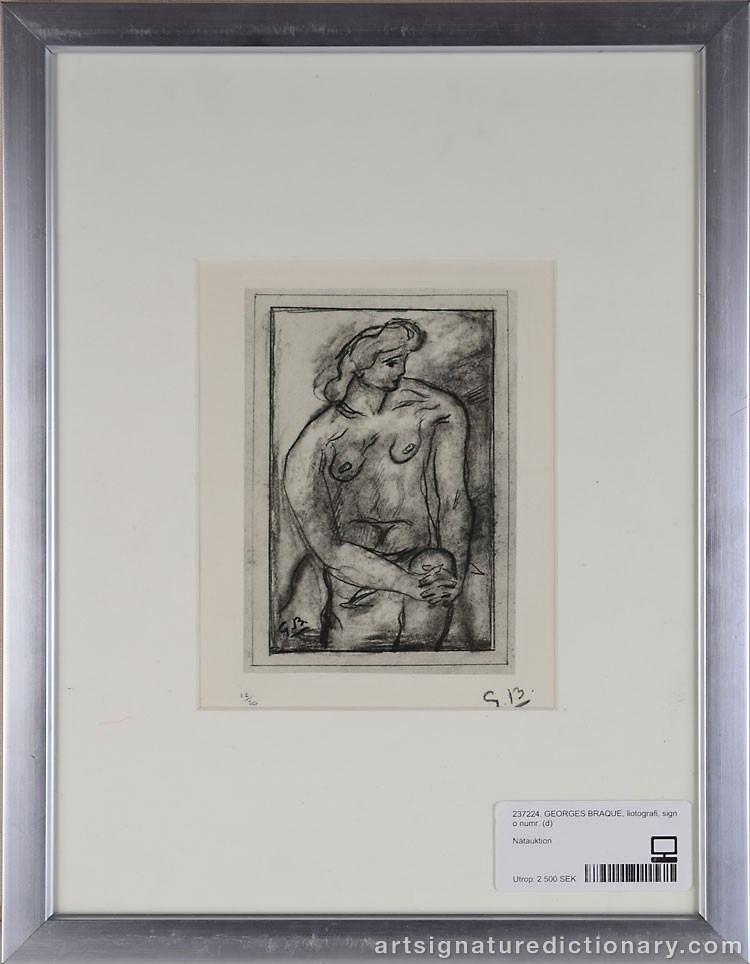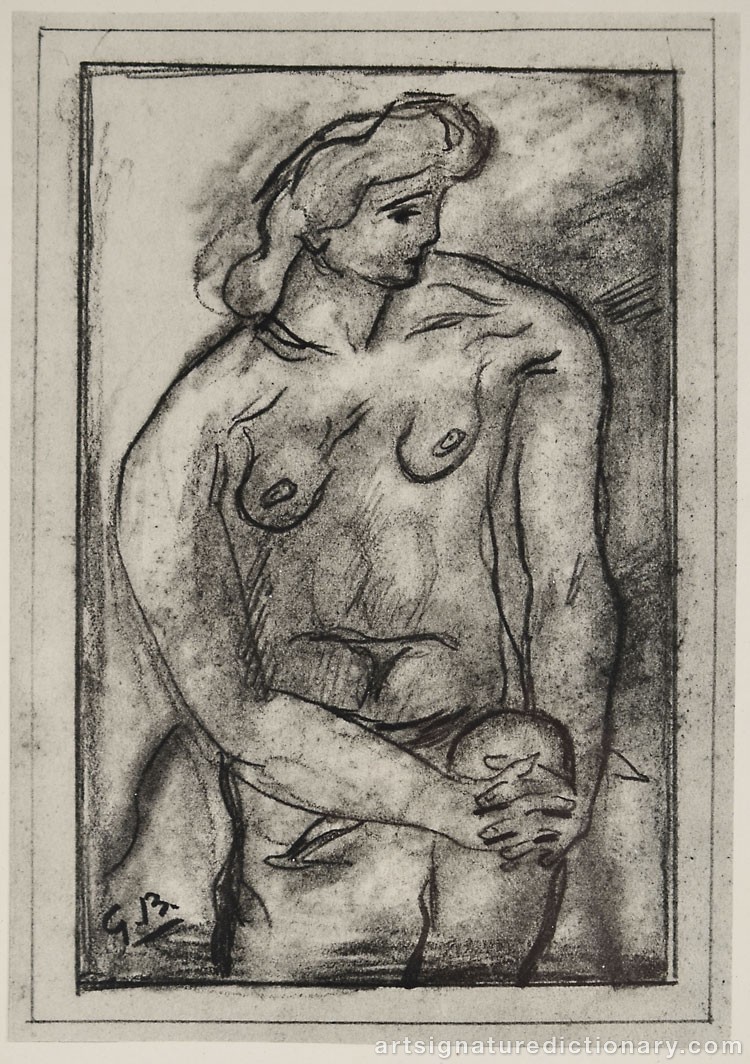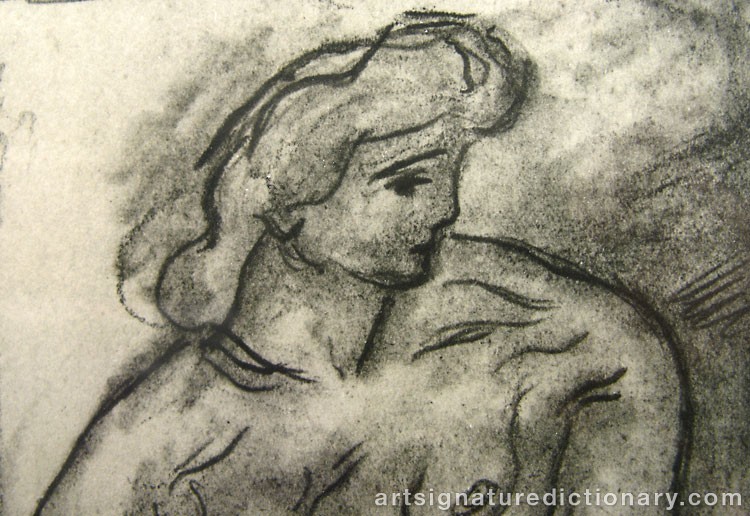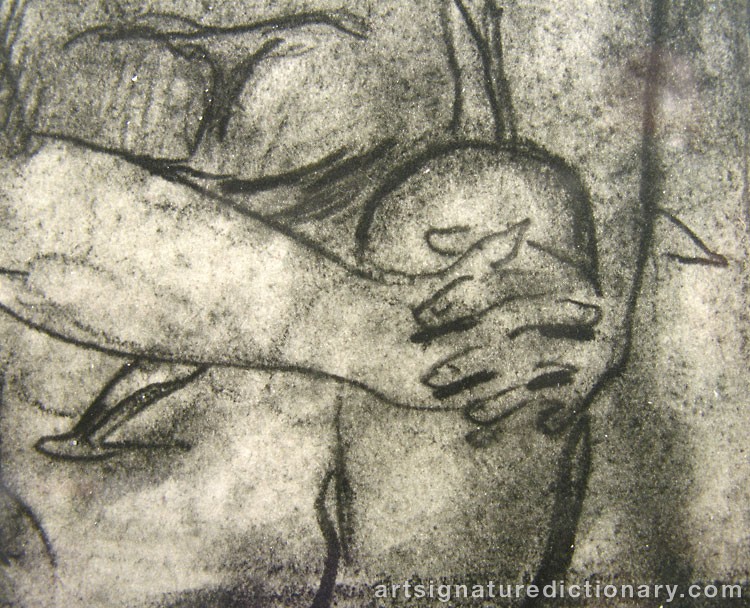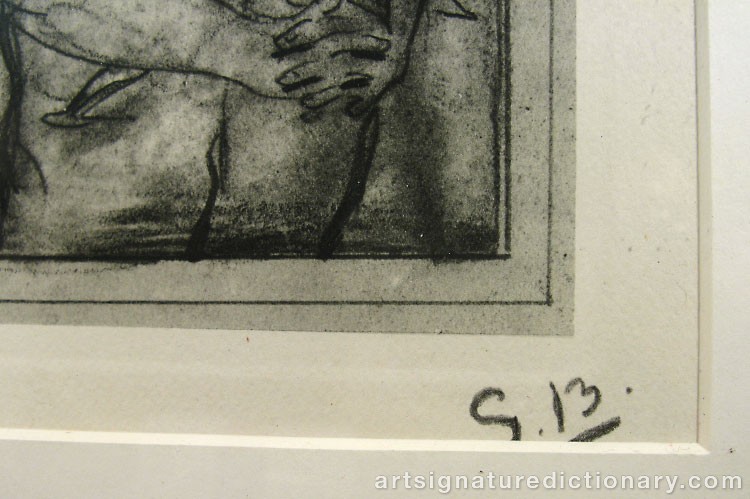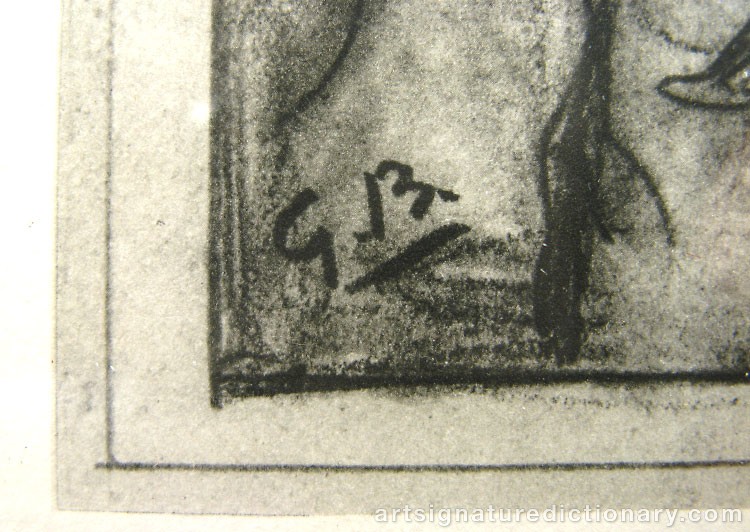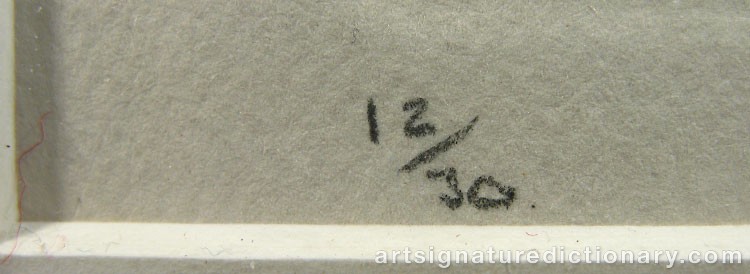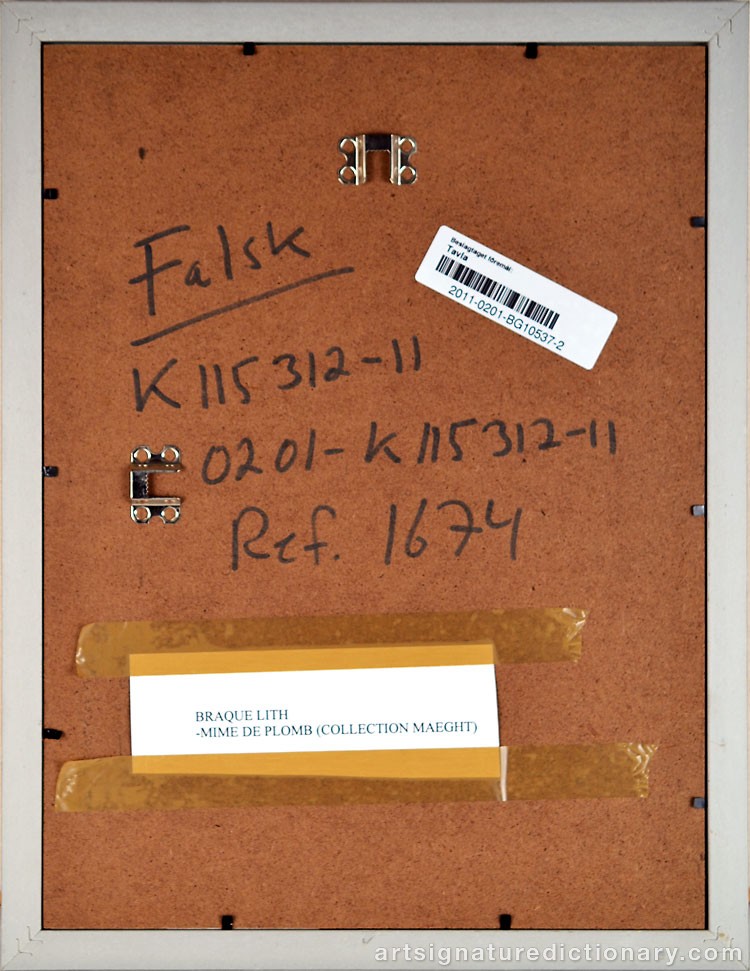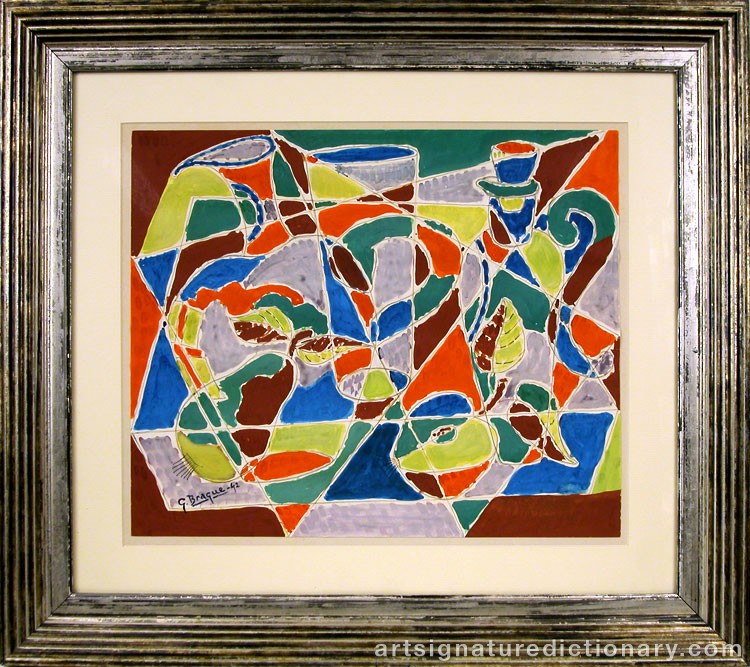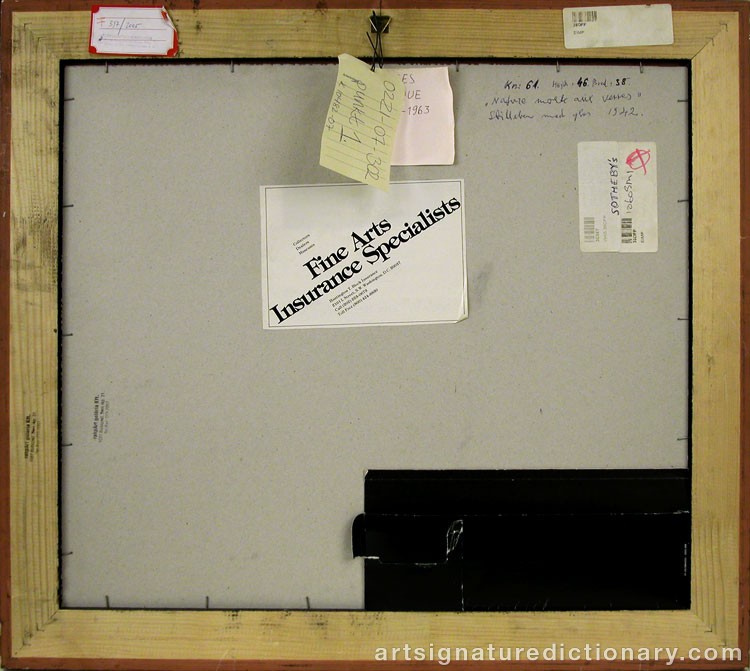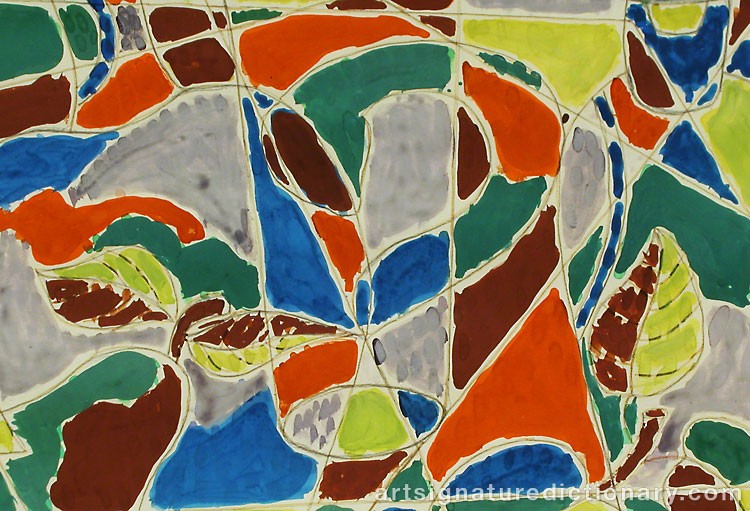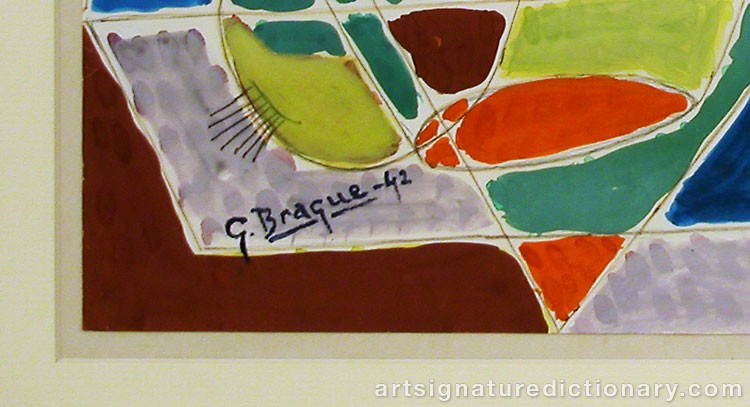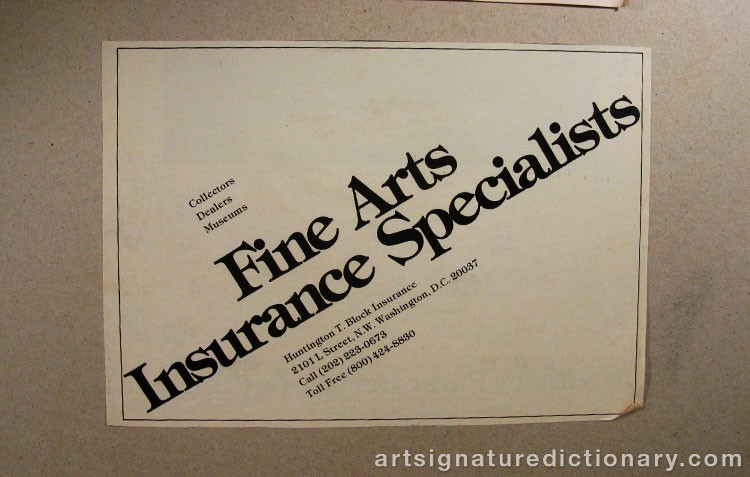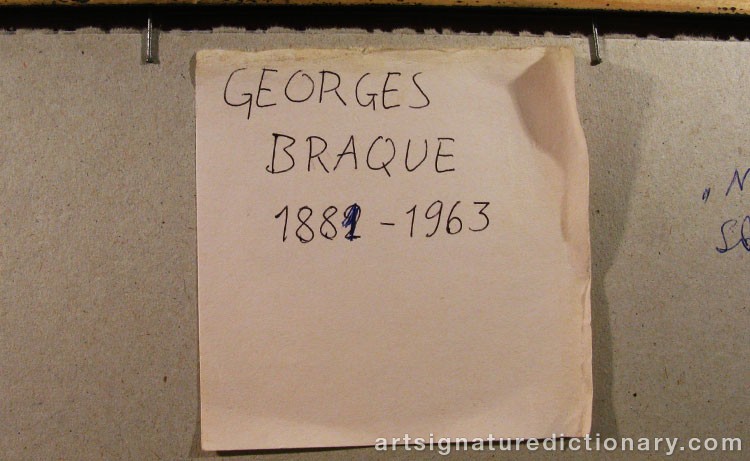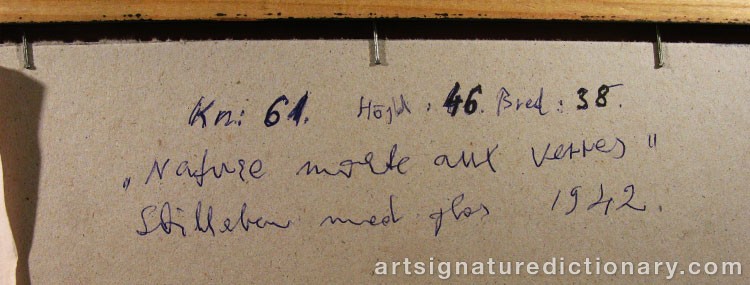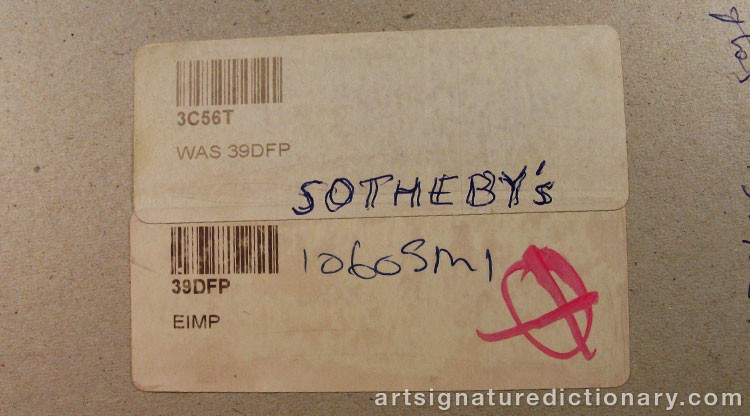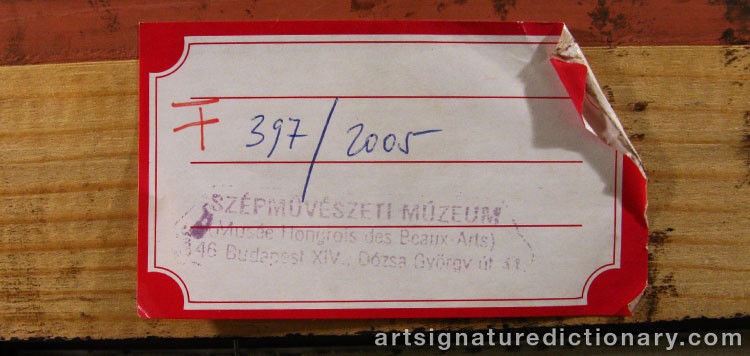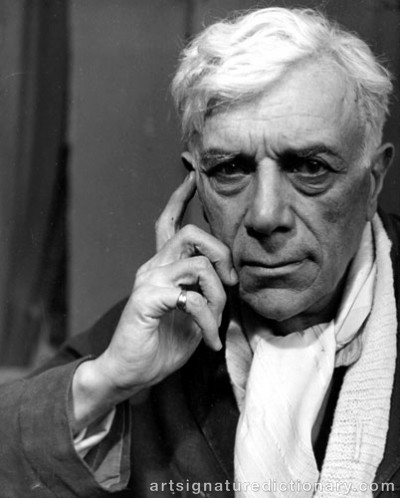
Georges BRAQUE
1882–1963, France
Also known as: GB

Signature proven counterfeit
Etching, sitting nude model, Signed "GB" numbered 12/30. Ostensibly depicting a original artworks made by Georges Braque. The painting was submitted to a small auction house in Stockholm by a man from England to be sold online. But the auction house staff became suspicious of the painting's authenticity and summoned the police who took the painting seized for further investigation. When the police would interrogate the Englishman, he had disappeared - he had left the country! After the expert investigation and judgment declared that the painting is not genuine. It is a forgery. The man had also submitted two other paintings for sale. One painting signed "Zorn" and the other was signed "Olle Baertling". Although these were forged and can be seen on the respective artist page.

Signature proven counterfeit
Gouache, signed "G. Braque", 39,4X47,3 cm, were seized in a small auction house in Stockholm in January 2007. The painting had been submitted by a woman (NB) who received the painting as collateral for a loan of 200,000 SEK. Background: The painting real owner was a man (MS) at the moment are indebted to the enforcement agency. He needs to borrow money to pay off its debt and says to the woman (NB) that the painting has been submitted to Sotheby's in London and that he will soon receive a large sum of money for the painting. The painting will not be sold! According to loan documents between the NB and MS, dated August 8, 2006 indicated that NB had the painting as collateral because MS has not paid his debt to her. He claims that the painting is valued at SEK 500.000 to 1000.000 and that NB is able to sell the painting alone. The police investigation revealed, according to a receipt, that the painting came to Sotheby's in London in December 2005. Sotheby's sent the painting to Quentin Laurens in Paris to study painting. They announced that the painting is not an authentic works of George Braque. The painting is returned to the MS in Sweden without action. Although the Modern Museum in Stockholm has studied the painting and found it to be a forgery. As provenance had MS attached art salon Liljevalchs exhibition catalog of 1954 (without pictures) and then selected a painting whose description is similar to this painting. Police investigation shows that the catalog refers to a completely different painting, in oil, which at the time was owned by a private individual. The district court's assessment: It has been found through investigation that the painting is not an authentic works of George Braque nor signed by him. The offense is aggravated fraud. The penalty was one year in prison.

Signature considered genuine

Signature considered genuine

Signature considered genuine

Signature considered genuine

Signature considered genuine

Signature considered genuine

Signature considered genuine

Signature considered genuine

Signature considered genuine

Signature considered genuine

Signature considered genuine

Signature considered genuine

Signature considered genuine

Signature considered genuine

Signature considered genuine

Signature considered genuine

Signature considered genuine
